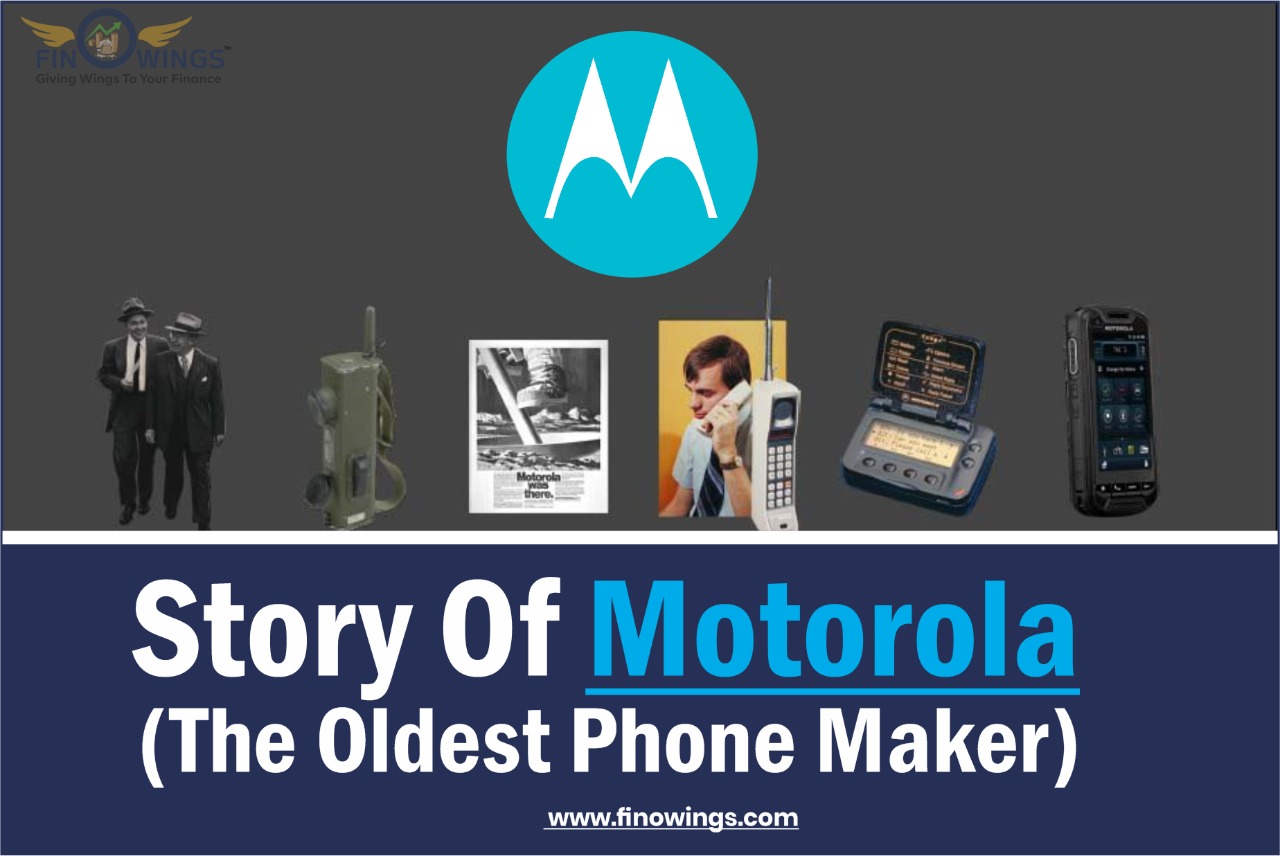Home >> Blog >> Motorola Story: The Oldest Phone Maker in the World
Motorola Story: The Oldest Phone Maker in the World

Table of Contents
Story of Motorola: The First Mobile Phone Company In The World
Motorola was a global telecommunication company with a 90- year history of technological inventions and innovations. It is based in Schaumburg, Illinois, United States. It used to be the world's first mobile phone company with a huge income, but now it is just a shadow of the glorious past.
Motorola was a pioneer in the manufacture of wireless communications and electronic systems. Starting from the manufacturer of security devices, Motorola shifted its direction and became the first mobile phone company in the world with a revenue of billions of dollars every year. However due to the change of time and internal conflicts the long-time king of mobile phones had to leave the front. Finally, it was at the age of disappearance. However, the company certainly has a lot more to be proud of. With several iconic gadgets to its name, Motorola has been at the forefront of technology leadership.
The Beginning: Motorola's origins
It all started in the 1920s when Paul Galvin from Illinois moved to Chicago in search of work. After a few unsuccessful attempts to work for a local storage-battery company there and start his own business, he founded the Galvin Manufacturing Corporation with his brother Joe Galvin in the year 1928. Its first product was the battery eliminator, a device that enabled battery-powered radios to work with household electricity instead.
Like almost all other companies, Galvin Manufacturing was badly affected by the Great Depression of 1929 in the United States. To get the company out of the red, Galvin began experimenting with the automobile-radio market.
In 1930 the company began selling a low-cost automobile radio with a catchy name called Motorola, , The name was an amalgam of sorts, the "motor" pulled from "motorcar" paired up with "-ola," to signify sound. This became the most popular new car option as well as a successful aftermarket kit. These radios, and the name, were a hit and Motorola became Galvin's first internationally sold product. Therefore, Galvan changed the name of the company from Galvin Manufacturing Corporation to Motorola.
Motorola product diversification:
In 1940 the company introduced a pair of two-way radio communication products for police and military. The first was an AM-band police radio system that was adopted later that year in Bowling Green, Kentucky; The second was the Handy-Talkie, an AM-band, handheld device with a long antenna that was eventually used by soldiers during World War II. Both AM-based systems were quickly replaced by FM technologies. The most notable replacement transpired in 1943 when Galvin Manufacturing developed the FM walkie-talkie. The device was carried by battlefield soldiers in special backpacks and could communicate over long distances with far less static interference than its AM-based predecessor. Two-way radio saw action on all fronts during the war and is credited as a decisive factor in many Allied victories in the region.
Galvin Manufacturing also came up with a home radio with push-button tuning features - a first of its kind. At the end of the decade, the company began researching television. However, research work was halted for a few years in the favor of war-related projects. But R&D work on television resumed in 1945 and the company announced its first portable, large-screen television TV in 1947.
Then they came up with several devices such as the first transceivers used in space, the first handheld portable telephone, and the first commercial cellular device. He also created a Six Sigma quality process in which 99.99966% of all opportunities must be free of defects.
Marketing redirection:
Robert Galvin became the company's president in 1956. Despite Motorola's ongoing success and strong brand recognition in consumer products, he shifted the company's strategy toward selling directly to businesses and the government. 1958 was the year when the National Aeronautics and Space Administration (NASA) came into existence, and Motorola became one of the agency’s first suppliers, providing space communication equipment like transponders that were used in Mariner II, which launched in 1962 to explore the planet Venus and later the manned Gemini space programs. Apollo astronaut Neil Armstrong's 1969 message, “one small step for a man, one giant leap for mankind” from the Moon was carried on a Motorola-designed transponder.
High-tech electronic equipment:
1974 marked a significant change for Motorola as the company shifted its focus to high-tech electronic components. Motorola introduced its first microprocessor, the MC6800, in 1974, an improved version of which also made its way to General Motor cars in the later decade. The decade also saw the company's 68000 families of microprocessors powering PCs and workstations from Apple, HP, DEC and Sun Microsystems.
Mobile Phones:
In 1973, Motorola took some major strides toward the technology that would define it for decades to come; The Company was using the DynaTAC (Dynamic Adaptive Total Area Coverage) system with a prototype of the world's first portable cellular telephone. This event demonstrated the occurrence of the cellular telephone in the world. But there were some drawbacks; It wasn't until 1984 that the brick-shaped phone, Weighing in at 28-ounce (794-gram) began to make its way into the hands of consumers. The device used to take 10 hours to get fully charged and gave a talk time of around 30 minutes. It was able to save the last 30 dialled numbers and cost $3,995.
In 1989, Motorola released the MicroTAC, which was the smallest and lightest cellular phone available at the time. That handset was succeeded in 1996 by the truly iconic StarTAC, a (relatively) small, "wearable" handset that popularized the clamshell design and brought vibration options from the pager side of Motorola's business. The tremendous success of the cellular telephone prompted the development of Iridium, a system of 66 small satellites stationed in low Earth orbit that enables communications across the Earth's surface. Commissioned in 1998, Iridium added to existing terrestrial communication systems, including fax, pagers, computers and telephones. However, the service proved too expensive, and Motorola dropped its interest in Iridium to limit its liability.
In 1996, the company launched the successor to DynaTAC. Dubbed the StarTAC, it was the first clamshell/flip mobile phone ever made. Although the device cost $1,000, it was a hugely successful phone, with sales of around 60 million units. The following year, Motorola launched several interesting-looking handsets.
Although sales of its semiconductor-based companies and the introduction of the well-received RAZR V3 cellular telephone in 2004 improved the company's bottom line, Motorola continued to lose money and market share to rival cellular telephone manufacturers. However, the declining sales began to turn around when in 2009 Motorola introduced smartphones running Android, an operating system released by the search engine company Google, Inc.
On 4 January 2011, Motorola split into two parts, publicly traded companies: Motorola Solutions and Motorola Mobility. Motorola Solutions (NYSE: MSI) provides mission-critical communications products and services to enterprise and government customers and Motorola Mobility, specializing in handsets and set-top boxes. On 19 February 2016, Motorola Solutions announced that it had completed the acquisition of Airwave in the United Kingdom. Airwave is the largest private operator of public safety networks in the world.
Motorola Mobility was acquired by Google in 2011 for around $12.5 billion. The company was later sold to Lenovo in 2014 for $2.5 billion. Motorola may have its ups and downs, but there's no denying that the company has some impressive technological achievements to its name.
Author
Frequently Asked Questions
Motorola was a pioneer in the manufacture of wireless communications and electronic systems. It is also known as the world's first mobile phone company.
Motorola was originally known as Galvin Manufacturing Corporation. Paul Galvin with his brother Joe Galvin founded the Galvin Manufacturing Corporation in 1928 in Chicago, Illinois, USA.
"Intelligence Everywhere" is Motorola's tagline developed by the agency to suggest that future devices and objects will use Motorola technology to benefit the lives of people everywhere.




.webp)










